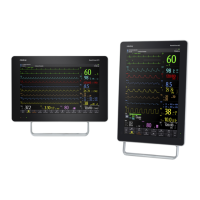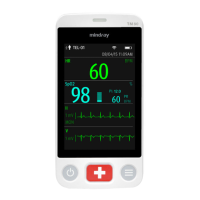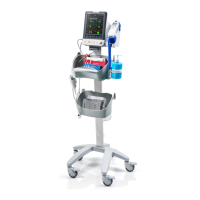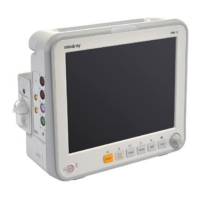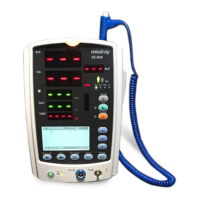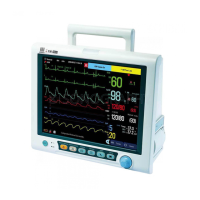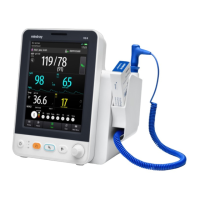Monitoring ECG/Resp
7-14
7.6.2 Changing the ST Alarm Limits
High and low ST alarm limits can be set individually for each ECG lead. Alarm limits can
also be set separately for single-lead and multi-lead ST monitoring. For 3-lead ECG
monitoring, you can directly change the ST alarm limits in the [ST Analysis] menu. For 5- or
12-lead ECG monitoring, you can select [Adjust ST Limits >>] from [ST Analysis] and then
set the ST alarm limits for each lead.
7.6.3 Adjusting ST Measurement Points
The ST measurement points need to be adjusted if the patient’s heart rate or ECG
morphology changes significantly. To adjust the ST measurement points:
1. In the [ST Analysis] menu, select [Adjust ST Points >>] to open the [Adjust ST
Points] window.
2. Select [ISO] or [ST] that you need to adjust and then use the and arrow keys to
move the measurement points.
ISO-point (isoelectric): provides baseline for the measurement.
ST: marks the end point of the ST segment analysis.
As shown above, the peak of the R-wave is the reference point for ST measurement. The ST
measurement for each beat complex is the vertical difference between two measurement
points.
NOTE
z Abnormal QRS complex is not taken into consideration for ST segment analysis.
R-wave peak
P
T
Isoelectric point ST measurement point Difference=ST value
